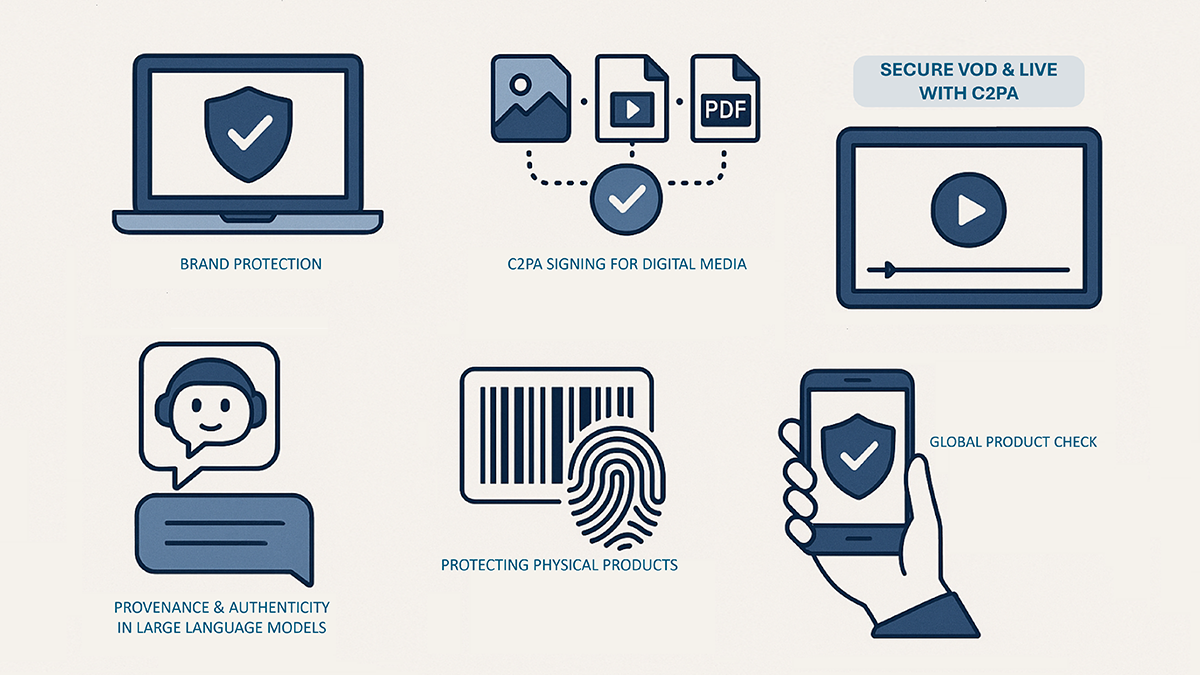Provenance for digital media is a key mechanism for ensuring authenticity, integrity and trust in the digital information world. Together with authentication it ensures that content is genuine and comes from a trustworthy source, which can preserve the integrity and credibility of a brand and can also limit the spread of fake news and disinformation.
FAMIUM Provenance and Authenticity provides workflows and tools to integrate provenance and authenticity information in digital media production and playout environments. With FAMIUM DASH and DRM the signing of MPEG-DASH and HLS content is enabled. For playback Media Player such as dash.js are extended to support the validation and visualization of the authenticity information.
FAMIUM Provenance and Authenticity supports the C2PA specifications, which define a standardized path for provenance data, interoperability, and authentication & verification. This ensures transparency and traceability for digital media, reducing disinformation and making the content's origin clear to the end user. FAMIUM Provenance and Authenticity offers the ability to apply, display and validate C2PA manifests to various media types, including live streams, VoD, and PDFs. Beyond that, with the FAMIUM solution, we can display C2PA's provenance information in chat responses from large language models (LLMs). The manifests of the PDF sources used in Retrieval Augmented Generation (RAG) are read and noted in the LLM response. In addition, the responses of the LLMs are provided with detailed provenance information and signed. The source references of the PDFs are stored and added as provenance information to the C2PA manifest of the LLM answer. Find more about our LLM activities here.


